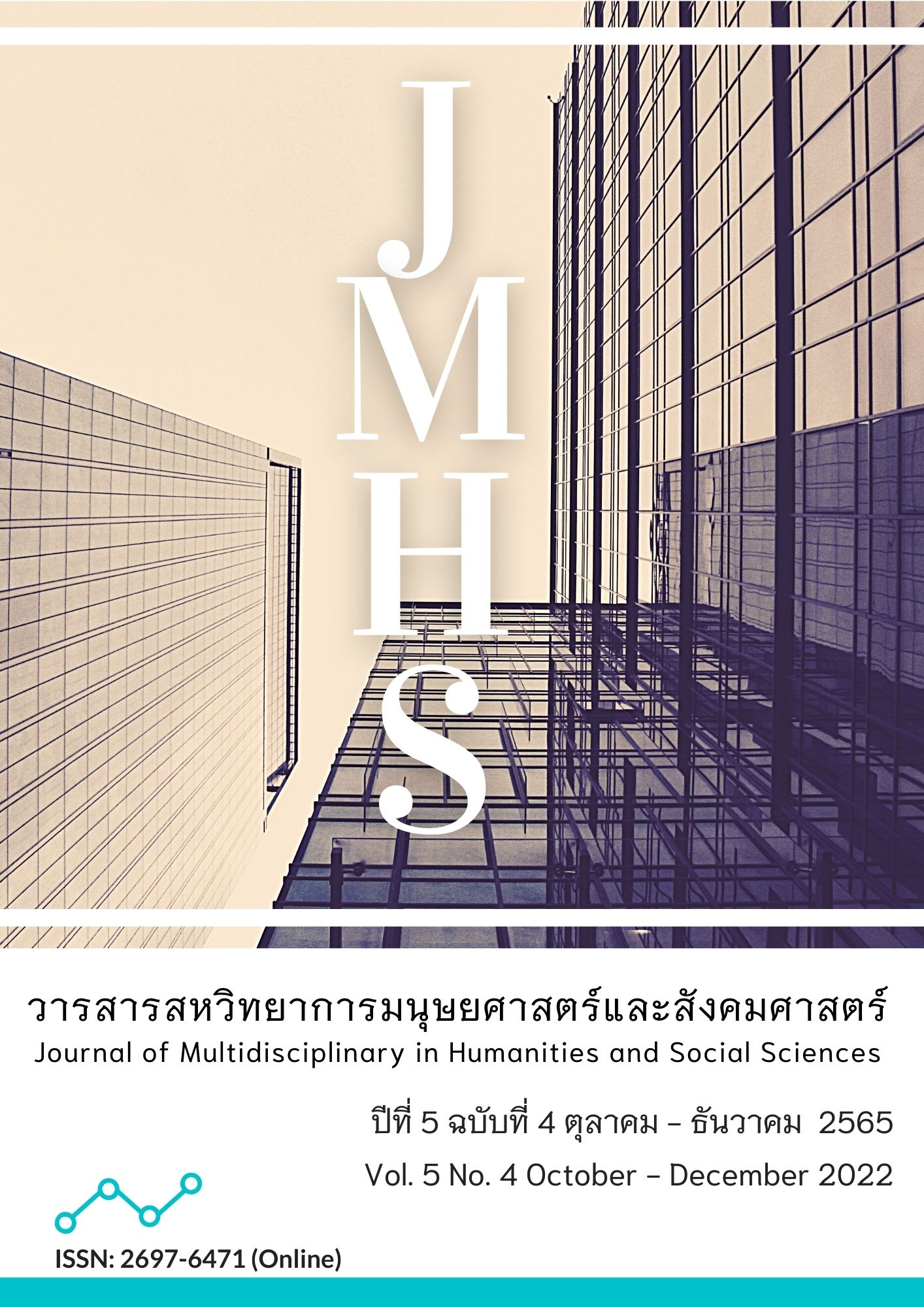การเลือกเช่าคลังสินค้าโดยการประยุกต์ใช้กระบวนการลำดับชั้นเชิงวิเคราะห์ กรณีศึกษา บริษัท ทีทีที
Main Article Content
บทคัดย่อ
บทความนี้มีวัตถุประสงค์ 1) เพื่อศึกษาและวิเคราะห์ถึงปัจจัยในการเลือกเช่าคลังสินค้าที่เหมาะสม 2) เพื่อศึกษาและจัดลำดับความสำคัญของปัจจัยในการเลือกเช่าคลังสินค้า และ 3) เพื่อเลือกเช่าคลังสินค้าที่เหมาะสมที่สุดโดยการใช้กระบวนการลำดับชั้นเชิงวิเคราะห์ รูปแบบการวิจัยเป็นการวิจัยเชิงปริมาณ ใช้แนวคิดการสังเคราะห์งานวิจัยและกระบวนการลำดับชั้นเชิงวิเคราะห์เป็นกรอบการวิจัย พื้นที่วิจัย คือ บริษัท ทีทีที กลุ่มตัวอย่างคือ ผู้เชี่ยวชาญด้านคลังสินค้าของบริษัทกรณีศึกษา จำนวน 3 คน จากเจ้าหน้าที่ระดับสูงทุกระดับ เครื่องมือที่ใช้ในการวิจัยมี 2 ชนิด คือ 1) การสังเคราะห์งานวิจัย 2) กระบวนการลำดับชั้นเชิงวิเคราะห์ วิเคราะห์ข้อมูลโดยใช้รูปแบบตารางเมตริกซ์ในการวิจัยเชิงปริมาณ และการวิจัยเชิงคุณภาพ ใช้วิเคราะห์เนื้อหาแล้วเขียนบรรยายเชิงพรรณนา ผลการวิจัยพบว่า
1. ได้ปัจจัยที่นำมาใช้ในการเลือกเช่าคลังสินค้าโดยการสังเคราะห์งานวิจัย 2. ได้ลำดับความสำคัญของปัจจัยในการเลือกเช่าคลังสินค้า คือ การเข้าถึงลูกค้า 02% ความสะดวกในการขนส่ง 30.50% ต้นทุนในการขนส่ง 16.00% แรงงาน 9.50% และความพร้อมของสาธารณูปโภค 5.90% ตามลำดับ และ 3. ได้ตัวเลือกในการเช่าคลังสินค้าที่เหมาะสมที่สุด คือ คลังสินค้า WW ที่ระดับค่าคะแนน 41%
โดยเกณฑ์ที่ใช้ในการตัดสินใจประกอบด้วย ปัจจัยด้านการเข้าถึงลูกค้า ปัจจัยด้านความสะดวกในการขนส่ง ปัจจัยด้านต้นทุนในการขนส่ง ปัจจัยด้านแรงงาน และปัจจัยด้านความพร้อมของสาธารณูปโภค สำหรับทางเลือกที่จะผ่านการกลั่นกรองเบื้องต้นถึงความเหมาะสมที่จะใช้เป็นทางเลือกคลังสินค้า FF, WG, WW และ BL ในการวิจัยจะนําปัจจัยและทางเลือกมาพัฒนาเป็นรูปแบบโครงสร้างลำดับชั้นเพื่อใช้เลือกเช่าคลังสินค้าที่เหมาะสม ซึ่งองค์ความรู้จากงานวิจัยนี้สามารถนำไปประยุกต์ในการตัดสินใจทางเลือกต่างๆได้ นอกจากการเลือกคลังสินค้า การเลือกโรงงาน การเลือกที่ตั้งสาขา การเลือกที่ตั้งบริษัท ก็สามารถทำได้โดยอยู่ภายใต้ปัจจัยหรือเงื่อนไขที่กำหนด
Article Details

อนุญาตภายใต้เงื่อนไข Creative Commons Attribution-NonCommercial-NoDerivatives 4.0 International License.
ทัศนะและความคิดเห็นที่ปรากฏในวารสาร ถือเป็นความรับผิดชอบของผู้เขียนบทความนั้น และไม่ถือเป็นทัศนะและความรับผิดชอบของกองบรรณาธิการ
เอกสารอ้างอิง
จุฑามาศ อินทร์แก้ว และ กาญจนา กาญจนสุนทร. (2556). การวิเคราะห์ปัจจัยการเลือกทำเลที่ตั้งสาขา กรณีศึกษา หจก. เอสเอส ค้าไม้ จังหวัดสุราษฎร์ธานี(บริหารธุรกิจมหาบัณฑิต). มหาวิทยาลัยหอการค้าไทย. สืบค้นจาก https://scholar.utcc.ac.th/handle/6626976254/1247
ณัฐวุฒิ นาดี และ นันทิ สุทธิการนฤนัย. (2556). การศึกษาค้นคว้า เรื่องการเลือกทำเลที่ตั้งโรงงานโดยการประยุกต์ใช้เทคนิค AHP และ Break-even Analysis(บริหารธุรกิจมหาบัณฑิต). มหาวิทยาลัยหอการค้าไทย. สืบค้นจาก https://scholar.utcc.ac.th/handle/6626976254/1204
ธนวัฒน์ เมธีธัญญรัตน์. (2558). การเลือกที่ตั้งคลังนํ้ามันในประเทศไทย โดยใช้วิธีลำดับชั้นเชิงวิเคราะห์. วิศวสารลาดกระบัง, 32(3), 37-42. สืบค้นจาก https://ph01.tci-thaijo.org/index.php/lej/issue/view/16599
ธราธร กูลภัทรนิรันด์ และ รชต สิงหกัมพล. (2557). การเลือกสถานที่ตั้งคลังสินค้าในเส้นทาง R3A สปป.ลาว โดยใช้กระบวนการลำดับชั้นเชิงวิเคราะห์. วารสารสหวิทยาการวิจัย: ฉบับบัณฑิตศึกษา, 3(2), 56-64. สืบค้นจากhttps://papers.ssrn.com/sol3/papers.cfm?abstract_id=3119005
ธนะรัตน์ รัตนกูล และ กันต์ธมน สุขกระจ่าง. (2559). การพัฒนากระบวนการตัดสินใจในการเลือกทำเลที่ตั้งของอุตสาหกรรมห้องเย็นโดยวิธีการวิเคราะห์เชิงลำดับชั้น. ใน การประชุมวิชาการระดับชาติครั้งที่ 1: การวิจัยเพื่อพัฒนาอย่างยั่งยืน, 258-263. ชลบุรี: มหาวิทยาลัยเกษตรศาสตร์ วิทยาเขตศรีราชา. สืบค้นจาก https://kukrdb.lib.ku.ac.th/proceedings/PSRC/search_detail/result/20003981
นรินทร์ เอื้อศิริวรรณ, วิกรม พนิชการ, ดำรงค์ รังสรรค์, และ อุบลรัตน์ วาริชวัฒนะ. (2560). การกำหนดหลักเกณฑ์คัดเลือกตำแหน่งที่เหมาะสมสำหรับการจัดตั้งสถานีตรวจสอบน้ำหนัก โดยการใช้ทฤษฎีกระบวนการลำดับชั้นเชิงวิเคราะห์ (AHP). วิศวกรรมสารเกษมบัณฑิต, 7(1), 17-32. สืบค้นจาก https://kbu.ac.th/eng/วิศวกรรมสารเกษมบัณฑิต-4/
นิติบดี ศุขเจริญ และ วัยวุฑฒ์ อยู่ในศิล. (2557). การวิเคราะห์อภิมาน และการสังเคราะห์อภิมาน. วารสารมนุษยศาสตร์และสังคมศาสตร์, 8(3), 43-56. สืบค้นจากhttps://www.researchgate.net/publication/270106356_karwikheraahxphiman_laeakarsangkheraahxphiman
ปัทมาพร ทวีสุข และ ยุวดี ศิริ. (2558). ปัจจัยในการตัดสินใจเลือกเช่าคลังสินค้าของผู้ประกอบการกรณีศึกษา : โครงการทีพาร์ค บางพลี 1,2 และ 3(วิทยานิพนธ์เคหพัฒนศาสตรมหาบัณฑิต). จุฬาลงกรณ์มหาวิทยาลัย. สืบค้นจาก http://cuir.car.chula.ac.th/handle/123456789/51019
ภัทรวดี ฉัตรเกษ และ ช่อแก้ว จตุรานนท์. (2565). การประยุกต์ใช้กระบวนการวิเคราะห์เชิงลำดับชั้นในการเลือกคลังชั่วคราว กรณีศึกษา โรงงานผลิตบรรจุภัณฑ์แก้ว. ใน รายงานการประชุมวิชาการปัญญาภิวัฒน์ระดับชาติ ครั้งที่ 12 และนานาชาติ ครั้งที่ 7 ประจำปี 2565, 453-464. นนทบุรี: สถาบันการจัดการปัญญาภิวัฒน์. สืบค้นจาก https://conference.pim.ac.th/thai/wp-content/uploads/2022/07/N7-วิศวกรรมศาสตร์และเทคโนโลยี.pdf
วศิน อาษาสร้อย และ ช่อ วายุภักตร์. (2558). การศึกษาทำเลที่ตั้งในการสร้างคลังสินค้า: ระหว่างเขตอำเภอเมืองจังหวัดหนองคายเขตอำเภอเมืองจังหวัดมุกดาหาร เขตอำเภอเมืองจังหวัดนครพนม และ เขตอำเภอเมืองจังหวัดบึงกาฬ. ใน รายงานการประชุมวิชาการทางธุรกิจและนวัตกรรมทางการจัดการ ระดับชาติและนานาชาติ ประจำปี 2558, 964-969. ขอนแก่น: มหาวิทยาลัยขอนแก่น. สืบค้นจาก https://mba.kku.ac.th/ncbmi/proceeding/2015/national/
ศิวัช แจ่มจรรยา และ ภูริชญา อ้ศวโกวิทพงศ์. (2562). การประยุกต์ใช้กระบวนการลำดับชั้นเชิงวิเคราะห์ในการเลือกที่ตั้งศูนย์หลบภัย ในช่วงสถานการณ์ฝุ่นละอองขนาดเล็กไม่เกิน 2.5 ไมครอน กรณีศึกษา มหาวิทยาลัยเชียงใหม่(วิศวกรรมศาสตรบัณฑิต). มหาวิทยาลัยเชียงใหม่. สืบค้นจาก https://ie.eng.cmu.ac.th/IE2014/downloads/2020_04/984/822-report.pdf
Hemingway, P., & Brereton, N. (2009). What is a Systematic Review?. Hayward Medical Communications, A Division of Hayward Group Ltd., 1-8.
Leske, S. (2011). CREATE 2011: Systematic Review, Metaanalysis and Qualitative Meta-Synthesis. The European Health Psychologist, 13(4), 83-85.
Saaty, T.L. (1996). Decision Making with Dependence and Feedback: The Analytic Network Process. Pittsburgh: RWS Publications.


